THE FIRST CENTURY



Book design--Front Cover and two spreads. Total page count: 84 pages.
1
Landscape Architecture at Texas A&M University Michael D. Murphy INTRODUCTION 3 T he history of landscape architecture at A&M, in many ways, paralleled and was integral with the development of the nation and the university over the last 100 years. This chronological outline, augmented by a variety of published and recalled sources represents my best effort at compiling an accurate history of the evolution of the landscape architecture program Texas A&M University. Many of the details of the early years are lost to time. This account is at best starting point to be revised, expanded, and improved in accuracy and detail. In particular, hope that will stimulate more consistent and conscientious documentation in the future than has been the case in the past. In recent years we just never seemed to consider that what we were doing might someday be taken seriously. And we were busy, focused primarily on the students and their progress. The students are the spirit of the program. Their education is the program’s central purpose. Yet, there have been too many exceptional students to mention individually, or even collectively, for their accomplishments, as students or in their later professional lives in this short outline (see Appendix A for list of Outstanding Alumni). A few have been mentioned as notable exemplars. regret that their stories could not have been more prominent part in this telling of the program’s history. Unfortunately, much of that story lies beyond the scope of this account. 4 Military Walk TO THE FIRST CENTURY � 6 24 1941: Enrollment running up to and during the war years dropped off drastically from thirtyseven students in 1941 to two in 1943. 1943: Assistant Professor Elo Urbanovsky (BArch 1931, Texas A&M) joins the faculty to teach design courses. Prior to joining the faculty, Urbanovsky had worked on the construction of the Walton Hall dormitory on campus. 1945: World War ended in September of 1945. The degree designation was changed from Bachelor of Science in Landscape Art to Bachelor of Science in Landscape Design (BSLD) to more accurately reflect the practical concerns and approach to land development required in the post war period of rapid urbanization. During the time, when the program was under the designation of Bachelor of Science in Landscape Art (from 1928 until 1945), 123 students earned degrees. 1946: Immediately following World War II, returning servicemen swelled the ranks of the student population at A&M. Some were former service men returning to complete their degrees. Others were men who, before the war had been unable to attend college, but with the support of the GI Bill providing educational benefits to veterans, flooded onto the campus. Housing was in critically short supply and the College relocated army barracks from decommissioned army training camps for use by married students at College View, the area north of the intersection of South College Avenue and University Drive. Walton Hall was converted to housing for married students. Freshmen cadets were housed in the recently vacated barracks at the deactivated Bryan Army Air Base (now the RELLIS campus). Although most of freshmen classes were held at the Annex, students had to be bussed to campus to attend some classes and special events. On the south side of the campus, the Project Houses, prewar cooperative housing development initiated by Professor Dan Russell, head of the Rural Sociology Department in 1937, served as housing for married student’s families. At the same time, houses occupied by the faculty and staff, which the College had previously provided on campus, were being moved off the campus to make space for new dormitory and academic building construction. Under the BS in Landscape Design designation (from 1945 until 1950) only 26 students are known to have earned degrees (10 students received degrees in 1950 but unclear how many of these were granted under the BSLD designation). Following the war, enrollment in landscape architecture reached an all-time high of fifty-six students. The postwar enrollment boom lasted from 1946 until 1948. That student population was not to be exceeded until 1971. 1947: Assistant Professor Robert ‘Bob’ White (BSLA, Pennsylvania State College) joined the landscape architecture faculty in September. Following military service in Europe, Robert White, who before the war had worked for the City of Pittsburg, Pennsylvania Planning Department, relocated to Houston to work with prominent landscape architect, Ruth London. The city was well known among planning and parks officials for its visionary Houston Development Plan prepared by Boston landscape architect, Arthur Coleman Comey in 1913, for the Houston Parks Commission. White believed that Houston offered opportunities for growth in new type of American city development based on the freedom of movement provided by the automobile and its influence on the expansion of suburban development. The post war building boom offered design opportunities for landscape architects to be on the forefront of the rapid expansion of mass housing, school campuses, park and recreation facilities, planned communities, and other large public and private landscape development projects. 1949: The study of landscape art had led the department in several new directions, one of which was to the study of ornamental plants and floriculture. To accommodate new areas of research interest in ornamental horticulture, greenhouse crop production, and floristry, the department was reorganized once again into the Department of Floriculture and Landscape Art with Professor Adolph F. De Werth (MS Horticulture, Ohio State University) as Head of Department. Assistant Professor Wallace McAllister ‘Mac’ Ruff (BS University of Florida, 1934, MS University of California, 1950) joined the faculty. The study of landscape art had led the department in several new directions, one of which was to the study of ornamental plants and floriculture. 25
Arch Book CLICK ON THE LINK FOR THE FULL BOOK LAYOUT
Landscape

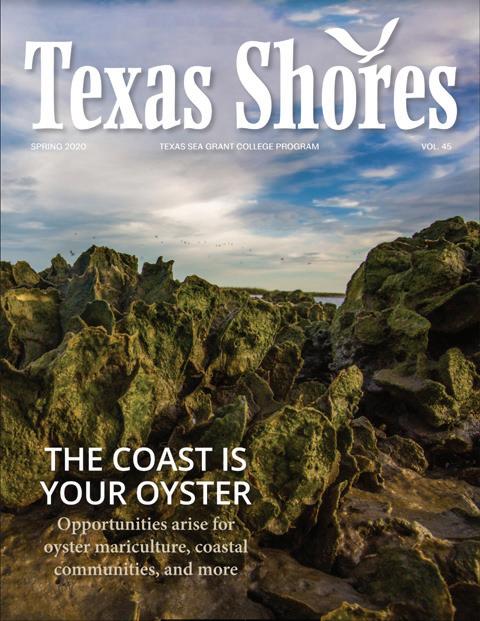

Never miss an issue of Texas Shores magazine. Subscribe today! Free for anyone in the United States Sign up online at tx.ag/TexasShoresSubscription S OLN I N E Sea Grant Texas Shores Magazine Designs Texas Shores 2023 Texas Shores 2020 Texas Shores 2021 CLICK ON THE LINKS FOR THE FULL MAGAZINE LAYOUT



Report--Front Cover and Inside Front Cover. Total page count: 40 pages. Inside Spreads CLICK ON THE LINK FOR THE FULL DOCUMENT Extreme Weather Book
TEXAS SEA GRANT 2019 IMPACTS Making Science Work for Texans
48,416 reached through educational programs PreK-12 students & 1 , 700 educators
events & presentations , 997 equaling over 36 , 121 people reached
22 to 1
Over $ 4.1 million in fuel savings and assistance for the shrimp industry
103 university students supported communities engaged in resiliency and ecosystem management, which saved those communities over $400,000 38
Every state dollar invested in Texas Sea Grant returns more than $22 to the Texas economy
5,522 acres of coastal wetlands, dunes, and prairie protected, enhanced, or restored
23 , 235 people engaged in informal education programs
73,336 hours Mobilized of volunteer time valued at $ 1 . 84 million
Graphic Illustration by Linda Orsi Infographic

DEPARTMENTS & PROGRAMS


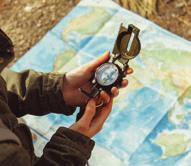





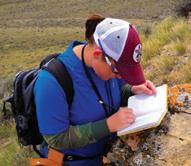
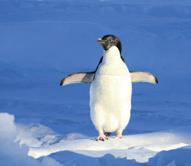


ON THE LEADING EDGE OF IT ALL DEPARTMENTS ATMOSPHERIC SCIENCES GEOGRAPHY GEOLOGY AND GEOPHYSICS OCEANOGRAPHY Undergraduate: B.S. in Meteorology Meteorology minor Undergraduate: B.S. in Geography B.S. in Geographic Information Science and Technology (GIST) GIST minor; GEOG minor Undergraduate: B.S. or B.A. in Geology B.S. in Geophysics Geology or Geophysics minor Undergraduate: 3+2 Fast track Bachelors to Masters in Ocean Science and Technology Oceanography minor Graduate: M.S. and Ph.D. in Atmospheric Sciences Graduate: M.S. and Ph.D. in Geography Graduate: M.S. and Ph.D in Geology or Geophysics Graduate: M.S. and Ph.D. in Oceanography Master of Geoscience (M.Gsc.) A bachelor’s degree in meteorology, can lead you to an exciting career as an expert on Earth’s atmosphere. Weather prediction and forecasting, climatology, the military, government and security and remote sensing using radar and satellites — all are options for the meteorologist. Geography blends physical and social sciences and the humanities. Study relationships between people and environments using cartography, Geographic Information Science (GIS), remote sensing and spatial analysis to learn how the human, social, cultural, and economic aspects of human kind interact. Geology focuses on rocks, minerals, fossils and landforms, while geophysics explores the physical and dynamic processes of our planet. You can tailor your program to suit your interests by emphasizing a particular sub-discipline such as the environment, petroleum, education, or engineering. As an undergraduate you can complete a 15-hour minor and study marine ecosystems, ocean currents and waves and the ocean’s physical properties while preforming research in the lab or at sea. A minor in oceanography is particularly appropriate for the majors in meteorology, geology and geophysics and environmental sciences. atmo.tamu.edu geography.tamu.edu geoweb.tamu.edu ocean.tamu.edu PROGRAMS ENVIRONMENTAL PROGRAMS IN THE GEOSCIENCES WATER MANAGEMENT AND HYDROLOGICAL SCIENCES Undergraduate: B.S. in Environmental Geosciences B.S. in Environmental Studies Undergraduate: None Graduate: None Graduate: M.S. and Ph.D. in Water Management and Hydrological Sciences Environmental geosciences blends geological, geochemical, geophysical, and water management principles and methods to help solve environmental problems. Environmental studies balances a background in geosciences with environmental policy and the social sciences. Graduate students shape careers in water management and conservation, one of the world’s most serious challenges. envp.tamu.edu waterprogram.tamu.edu CAREER FIELDS EDUCATION •Informal educator •K-12 teacher •Outreach specialist •Professor MEDICINE •Epidemiologist •Medical specialist •Physician •Toxicologist SCIENCE •Astronomer •Atmospheric scientist •Engineering geologist •Exploration geologist •Geoarchaeologist •Geochemist •Geologist •Geophysicist •Hydrologist •Hydrogeologist •Mineralogist •Micropaleontologist •Oceanographer •Planetary scientist •Sedimentary petrologist •Seismic interpretor •Soil scientist ART •Graphic designer •Illustrator •Science communicator •Sculptor ENGINEERING •Agricultural engineer •Chemical engineer •Civil engineer •Environmental engineer •Geological engineer •Mechanical engineer •Mining engineer •Petroleum engineer LAW •Environmental lawyer •Forensic scientist •General counsel •Land use lawyer •Law enforcement officer •Real estate lawyer BUSINESS •Computer scientist •Defense contractor •Entrepreneur •Environmental manager •Financial advisor •GIS technician •Intelligence officer •Market analyst •Spatial data analyst POLICY •Congressional staffer •Policy analyst •Elected official •Foreign affairs specialist •Lobbyist •Legislative director •Science advisor WRITING •Communications specialist •Novelist •Science journalist •Screenwriter RESEARCH INDUSTRY GOVERNMENT ACADEMIA NONPROFIT THE MOST COMPREHENSIVE GEOSCIENCES program in the world is at Texas A&M University. Through the departments of Atmospheric Sciences, Geography, Geology & Geophysics, and Oceanography and programs such as Environmental Programs and the Water Management & Hydrological Sciences, you will identify the academic pathways that will prepare you for the career you are passionate about and help you get the job you have dreamed about. In the College of Geosciences, you will enjoy unparalleled access to faculty — scholars who are the very best in the their fields in the world. The need for geoscientists is critical. The demand is expanding far more rapidly than other fields of study and profession creating amazing opportunities for your future. Before College Programs IGEO: Come for a long weekend in the fall to explore the college and the campus. You will stay in the student dorms, go to an Aggie football game, and learn more about our programs and your future. geosciences.tamu.edu/igeo GEOX: Come for an extended summer program to learn about the College of Geosciences in depth. You will attend classes, go on amazing field trips, meet incredible scholars and live a student before you enroll. geosciences.tamu.edu/geox
Information courtesy of Heather Houlton and Abigail Seadler/AGI (American Geosciences Institute) Academic Brochure CLICK ON THE LINK FOR THE FULL LAYOUT Geosciences Academic Brochure









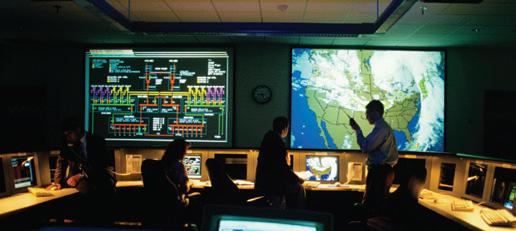


Career Center Flyer Set ENVIRONMENTAL PROGRAMS IN GEOSCIENCES (ENVP) WHAT CAN I DO WITH THIS MAJOR? zCAREER COMPETENCIES DEVELOPED Career & Self Development Grow personally and professionally through the use of scientific literature, field experiences and research, interactions with colleagues and industry professionals and participation in organizations and conferences. Communication Provide scientific or technical guidance, support, coordination, or oversight to governmental agencies, environmental programs, industry, or the public. Critical Thinking Review and implement environmental technical standards, guidelines, policies, and formal regulations that meet all appropriate requirements. Apply rational decisionmaking to ethical dilemmas in the environmental science-policy domain. Equity & Inclusion Actively contribute to inclusive and equitable practices where varied perspectives can come together to advance scholarship and solve problems in a way that reflects ou diverse nation and the world’s needs. Leadership Promote behavioral and cultural change by influencing others to secure environmental improvements that go beyond minimum statutory requirements. Professionalism Articulate the ethical responsibilities of an environmental professional and choose ethical courses of action in their work. Teamwork Work collaboratively in teams toward a common goal relating to environmental systems or environmental sciencepolicy linkages. Technology Reformulate and use practical, conceptual, or technological understanding of environmental management to develop ways forward in complex situations. zRESEARCHING JOB TITLES & CAREERS O*Net online onetonline.org Firsthand Vault Guides careercenter.tamu.edu/resources Occupational Outlook Handbook bls.gov American Geosciences Institute Career Resources americangeosciences.org/workforce/career-resources National Association of Environmental Professionals naep.org TAMU Graduation Survey Data aggiesurveys.tamu.edu/public/Reports.aspx EnvironmentalScience.org environmentalscience.org zPOSSIBLE INTERNSHIPS Berg-Oliver Associates, Inc. – Wetland Ecologist/Scientist Intern BP – AirBP Health & Safety Compliance Coordinator BP – Upstream Occupational Health & Safety Intern Calpine Corporation – EHS Intern General Motors – Sustainable Workplaces Environmental Engineer Intern Grand Teton National Park- Interpretive Park Ranger Intern Halliburton – Field Engineer Intern JBS Engineering & Environmental, LLC Environmental Scientist Internship Langan Engineering and Environmental Services – CAMPUS Environmental Internships EPA Intern Phillips 66 – Environmental University Intern ENVIRONMENTAL PROGRAMS IN GEOSCIENCES (ENVP) The Environmental Geosciences and Environmental Studies programs are designed to enhance student knowledge of complex earth system science and environmental issues from a variety of perspectives and to prepare students for an array of post-graduate opportunities. Environmental Geosciences is an intensive, interdisciplinary study for students interested in scientific and technical careers and who are passionate about the environment. Students study the interaction between the Earth’s surfaces, oceans, atmosphere and human impacts on the environment. Environmental Studies gives students a scientific foundation and expertise in environmental policy, legislation, and decision-making skills concerning the environment. It is designed for students who want to acquire a fundamental knowledge of the interactions between society and the natural environment from a geoscience perspective. WHAT CAN DO WITH THIS MAJOR? zCAREER COMPETENCIES DEVELOPED Career & Self Development Grow personally and professionally through the use of scientific literature, field experiences and research, interactions with colleagues and industry professionals and participation in organizations and conferences. Communication Express geographic concepts to disciplinespecific and general audiences through writing, spoken presentations and the creation of graphs. Critical Thinking Identify complex problems and review related information from a variety of sources to develop and evaluate options and implement solutions. Equity & Inclusion Actively contribute to inclusive and equitable practices where varied perspectives can come together to advance scholarship and solve problems in a way that reflects our diverse nation and the world’s needs. Leadership Be creative and innovative in the development and improvement of geographical skills, knowledge, approaches, technology and ideas. Professionalism Comply with relevant legislation, regulation, and codes of conduct, and behave responsibly, safely, and ethically. Teamwork – Work collaboratively to address problems and develop solutions. Provide expertise to teams in fields such as resource development and management, business location and market area analysis, environmental hazards, regional cultural history, and urban social planning. Technology Demonstrate analytical skills by showing proficiency in statistical software, input-output modeling, and GIS designing. zRESEARCHING JOB TITLES & CAREERS O*Net online onetonline.org Firsthand Vault Guides careercenter.tamu.edu/resources Occupational Outlook Handbook bls.gov American Geosciences Institute Career Resources americangeosciences.org/workforce/career-resources American Association of Geographers jobs.aag.org TAMU Graduation Survey Data aggiesurveys.tamu.edu/public/Reports.aspx zPOSSIBLE INTERNSHIPS Chevron – IT Intern Chevron – Land Department Spatial Intern ConocoPhillips Land GIS Analyst Esri- Summer Internship Program General Motors Global Workplace Safety Intern General Motors Sustainable Workplaces Environmental Engineer Intern Grand Teton National Park – Interpretive Park Ranger Intern Halliburton Field Engineer Intern JBS Engineering & Environmental, LLC –Environmental Scientist Intern NuStar Energy – GIS Intern PepsiCo – R&D Intern Syngenta – Crop Protection, Sales Intern Shenandoah NP- Appalachian Conservation Corps Backcountry Support and GIS Intern TCEQ Mickey Leland Environmental Intern Terracon Geotechnical Engineer Intern Tudor, Pickering, Holt & Co Summer GIS Analyst GEOGRAPHY (GEOG) GEOGRAPHY (GEOG) Geography majors learn how physical and social systems interact and shape the surface of the earth, the earth’s atmosphere, and patterns of human habitation. Geography student receive a well-rounded education in the natural and social sciences, and geography graduates are qualified for employment n research, consulting, teaching, planning, and management. A B.S. in Geography is also a well-recognized stepping-stone to graduate study and professional degrees such as law. WHAT CAN I DO WITH THIS MAJOR? zCAREER COMPETENCIES DEVELOPED Career & Self Development Grow personally and professionally through experiential learning in the classroom, laboratory, and through outdoor excursions. Students conduct research in the laboratory and in the field, interact with colleagues and industry professionals and participate in organizations and conferences. Communication Express scientific ideas and evidenced-based reasoning in written or oral form. Critical Thinking Analyze and interpret geological data to solve practical problems and test scientific hypotheses. Equity & Inclusion Incorporate varied perspectives to advance scholarship and solve problems in ways that reflect our diverse nation and global needs. Leadership Effectively lead by example as a geologic professional and practice the principles of effective team leadership. Professionalism – Demonstrate the ethical decision-making skills required of a geologic professional and act as an example. Teamwork – Work as a member of multidisciplinary teams to solve challenging multidisciplinary problems. Technology Understand and employ technologically advanced instruments and master geologic software (e.g. ArcGIS, Rockware) and other data and modeling tools (e.g. Matlab, Python, R, Adobe Illustrator, GoCAD); apply various geological techniques and skills in analyzing large data sets and numerical modeling. zRESEARCHING JOB TITLES & CAREERS O*Net online onetonline.org Firsthand Vault Guides careercenter.tamu.edu/resources Occupational Outlook Handbook bls.gov American Geosciences Institute Career Resources americangeosciences.org/workforce/career-resources Geological Society of America (GeoCareers) geosociety.org/GSA TAMU Graduation Survey Data aggiesurveys.tamu.edu/public/Reports.aspx zPOSSIBLE INTERNSHIPS Apache Corporation Geosciences Intern BP America Upstream Geologist Intern Calpine Geothermal Production Analysis Engineer Intern Chevron - IT Intern or Geology/Geophysics Intern Concho Resources, Inc. Geoscience Intern ConocoPhillips Geology & Geophysics Intern EOG Resources Geoscience Intern Equinor - Subsurface Geologist Intern Grand Teton National Park Interpretive Park Ranger Intern Goldman Sachs IBD Houston Summer Analyst Halliburton Field Engineer Intern Hess Corporation Geologist/Geophysicist Intern Hilcorp Energy - Intern Geoscientist, Hunt Consolidated Inc Geologist Intern GEOLOGY (GEOL) GEOLOGY (GEOL) The B.S. in Geology provides students with a strong foundation in geology as well as a background in other sciences and math. This comprehensive degree prepares students for successful careers in a range of fields, including environmental and energy industries, federal and state agencies, and private sector and nonprofit organizations. This strong foundation also prepares students for advanced study in graduate programs. This broad, omprehensive background provides students the flexibility to adapt their future career paths over time. The B.A. in Geology allows students to build an interdisciplinary degree combining geology with other disciplines. The B.A. in Geology is designed for students who plan to use geology as a basis for careers in professions such as law (e.g., environmental and energy), medicine, business and finance, GIS, public policy, science communication and education, science journalism, and resource-related sales and marketing. The B.A. in Geology also enables students to build an interdisciplinary degree combining other disciplines with a geological foundation in preparation for interdisciplinary graduate work. GEOPHYSICS (GEOP) WHAT CAN I DO WITH THIS MAJOR? zCAREER COMPETENCIES DEVELOPED Career & Self Development Grow personally and professionally through experiential learning in the classroom, laboratory, and through outdoor excursions. Students conduct research in the laboratory and in the field, interact with colleagues and industry professionals and participate in organizations and conferences. Communication Express scientific ideas in written or oral form, supporting conclusions with data analyses and visualizations. Critical Thinking Analyze and interpret geophysical data to characterize the subsurface and understand geologic processes. Analyze and interpret geophysical and geological data to solve practical problems and test scientific hypotheses. Equity & Inclusion Incorporate varied perspectives to advance scholarship and solve problems in ways that reflect our diverse nation and the world’s needs. Leadership Effectively lead others as a geoscience professional by example and through training or supervision of technicians and other staff. Embody the principles of effective team leadership. Professionalism Demonstrate the ethical decision-making skills required of a geophysical professional and act as an example. Teamwork Work as a member of multidisciplinary teams to solve challenging multidisciplinary problems. Technology Understand and employ technologically advanced instruments and use and develop software and code for data analysis, visualization, forward and inverse modeling, data mining, machine learning, analytic and numerical modeling. zRESEARCHING JOB TITLES & CAREERS O*Net online onetonline.org Firsthand Vault Guides careercenter.tamu.edu/resources Occupational Outlook Handbook bls.gov American Geosciences Institute Career Resources americangeosciences.org/workforce/career-resources Geological Society of America (GeoCareers) geosociety.org/GSA TAMU Graduation Survey Data aggiesurveys.tamu.edu/public/Reports.aspx zPOSSIBLE INTERNSHIPS BP America Inc.- Upstream Geophysicist Intern Calpine Corporation – Geothermal Production Analysis Engineer Intern Chevron – Earth Science Intern Chevron- Petrotechnical Application and Data Management Support Intern Chevron IT Intern EOG Resources- Geophysical Intern General Motors Global Workplace Safety Intern General Motors- Sustainable Workplaces Environmental Engineer Intern Grand Teton National Park- Interpretive Park Ranger Intern Halliburton- Landmark Software & Services Technology Engineering Intern SM Energy- Geoscience/Geology/Geophysics Intern Susquehanna International Group, LLP Trading Intern Terracon Consultants, Inc. Geotechnical Engineer Intern Terracon Consultants, Inc. – Construction Materials Intern GEOPHYSICS (GEOP) The Bachelor of Science in Geophysics prepares students for advanced study in graduate programs and technical careers. The first two years provide students with a oundation in chemistry, physics, mathematics and geology. The ast two years of the Geophysics degree emphasize geophysical field methods, data processing analyses, modeling and theory. Technica electives allow students to pursue exploration, geophysics, resource extraction and management, environmental sciences, computing and machine learning. The job market for geophysicists is wide and diverse, including subsurface exploration for energy resources, marine geophysics, water resources and management, identifying and mitigating natural hazards, and understanding our impact on the environment. WHAT CAN DO WITH THIS MAJOR? METEOROLOGY (METR) zCAREER COMPETENCIES DEVELOPED Career & Self Development Grow personally and professionally through the use of scientific literature, field experiences and research, interactions with colleagues and industry professionals and participation in organizations and conferences. Communication Communicate weather conditions, forecasts, or severe weather warnings to a variety of audiences in writing via radio, television, or the Internet or provide this information to the news media. Critical Thinking Interpret data, reports, maps, photographs, or charts to predict long- or short-range weather conditions, using computer models and knowledge of climate theory, physics, and mathematics. Equity & Inclusion Actively contribute to inclusive and equitable practices where varied perspectives can come together to advance scholarship and solve problems in a way that reflects our diverse nation and the world’s needs. Leadership Take the initiative to use mathematical or computer models for weather forecasting and gather data from sources such as surface or upper air stations, satellites, weather bureaus, or radar for use in meteorological reports or forecasts. Professionalism Exemplify principles of quality service to customers and colleagues. This includes customer needs assessment, meeting quality standards for services, and evaluation of customer satisfaction. Teamwork – Collaborate with other offices, agencies, professionals or researchers regarding the use and interpretation of climatological information for weather related products and warnings. Technology Apply mathematics to model atmospheric phenomena and use computer software to analyze atmospheric data. zRESEARCHING JOB TITLES & CAREERS O*Net online onetonline.org Firsthand Vault Guides careercenter.tamu.edu/resources Occupational Outlook Handbook bls.gov American Geosciences Institute Career Resources americangeosciences.org/workforce/career-resources American Meteorological Society careercenter.ametsoc.org TAMU Graduation Survey Data aggiesurveys.tamu.edu/public/Reports.aspx zPOSSIBLE INTERNSHIPS AccuWeather Intern Ameren – Sustainability & Environmental Intern Cheniere Energy- Meteorology Internship Chevron- Information Technology Intern CFD Research Corporation Engineering Intern Cox Media Group – Weather Intern Fast Enterprises, LLC. – Implementation Intern JBS Engineering & Environmental, LLC –Environmental Scientist Intern General Motors – Global Aftersales Engineering Service Operation Intern MIT Lincoln Laboratory – Radar Meteorology Intern • National Science Foundation REU Internships • National Weather Service – Pathways Internship • NASA - STEM Internships • TCEQ Mickey Leland Environmental Intern (MLEIP) • USAA – Actuarial Analyst Intern Broadcast Intern (most TV stations) William M. Lapenta - NOAA Student Internship Program FOX Weather Summer Associate METEOROLOGY (METR) The discipline of Meteorology requires heavy concentrations in physics and advanced mathematics, and students are required to have a strong background in both. Scientists use knowledge about the atmosphere to predict weather, perform long-range forecasting, apply numerical modeling, evaluate climate change, and monitor air quality. Atmospheric Sciences and Meteorology programs also include coursework in remote sensing and environmental studies, and interdisciplinary applications with oceanography and hydrology. Undergraduates have many opportunities to participate in research projects that contribute to regional, national, and even international programs. WHAT CAN I DO WITH THIS MAJOR? zCAREER COMPETENCIES DEVELOPED Career & Self Development Grow personally and professionally through the use of scientific literature, field experiences and research, interactions with colleagues and industry professionals and participation in organizations and conferences. Communication Interpret and explain concisely ocean science material using proper grammar, appropriate publication format and citation style, and persuasive visual aids to a wide range of audiences. Critical Thinking Be able to interpret data, reports, maps, and/ or photographs to predict oceanographic phenomena while applying oceanographic knowledge to issues such as ocean acidification, climate change, sea level rise, pollution control harmful algal blooms, and hypoxia. Equity & Inclusion Actively contribute to inclusive and equitable practices to facilitate varied perspectives coming together to advance scholarship and solve problems in a way that reflects ou diverse nation and the world’s needs. Leadership Effectively lead others by example and through peer mentoring. Understand principles of effective team leadership gained through high impact team activities. Professionalism Identify the relative costs and benefits of potential actions to choose the most appropriate one when solving problems and making decisions. Teamwork – Collaborate with other offices, agencies, professionals or researchers regarding the use and interpretation of oceanographic information. Technology Gather data from sources such as laboratory, shipboard and remote instrumentation, and scientific databases. Apply knowledge of analytical or scientific software, graphics or imaging software, and operating system software. zRESEARCHING JOB TITLES & CAREERS O*Net online onetonline.org FirsthandVault Guides careercenter.tamu.edu/resources Occupational Outlook Handbook bls.gov Association for the Sciences of Oceanography and Limnology aslo.org/professional-development/careers-in-the-aquatic-sciences The Oceanography Society jobs.tos.org TAMU Graduation Survey Data aggiesurveys.tamu.edu/public/Reports.aspx zPOSSIBLE INTERNSHIPS Anadarko Petroleum Corporation –Environmental Intern Calpine Corporation – Geothermal Production Analysis Engineer Intern Chevron- Earth Science Intern Chevron- Geoscientist/Geologist/Geophysicist Intern Fugro – Geoscience Marine Intern General Motors- Global Workplace Safety Intern General Motors- Sustainable workplace Environmental Engineer Intern Kiewit- Internships National Geospatial-Intelligence Agency (NGA) – Student Intern Pan American Energy – Argentina International Internships PepsiCo – R&D Intern TCEQ - Mickey Leland Environmental Intern (MLEIP)
OCEANOGRAPHY (OCGN)
A B.S. in Oceanography provides students with an interdisciplinary education and training in one of four themes in ocean science: Ocean Observing Systems and Technology (OOST), Ocean Climate (OC), Marine Ecosystem Processes (MEP), and Marine Chemistry and Geochemistry (MCG). Students with passion and interest in ocean-related science with applications to today’s environmental issues will develop critical skills and experience in evaluating and analyzing large oceanographic datasets translatable to a wide range of careers.
OCEANOGRAPHY (OCGN)












Family Members Police Counselor Friends Safe Social Media Sites Teachers WHO CAN TEENS CALL OR TALK TO IF THEY NEED HELP ? Booklet for teens in collaboration with the College of Nursing. LatinX Book CLICK ON THE LINK FOR THE FULL LAYOUT
THE END byLINDAORSI LindisimoDesign














































